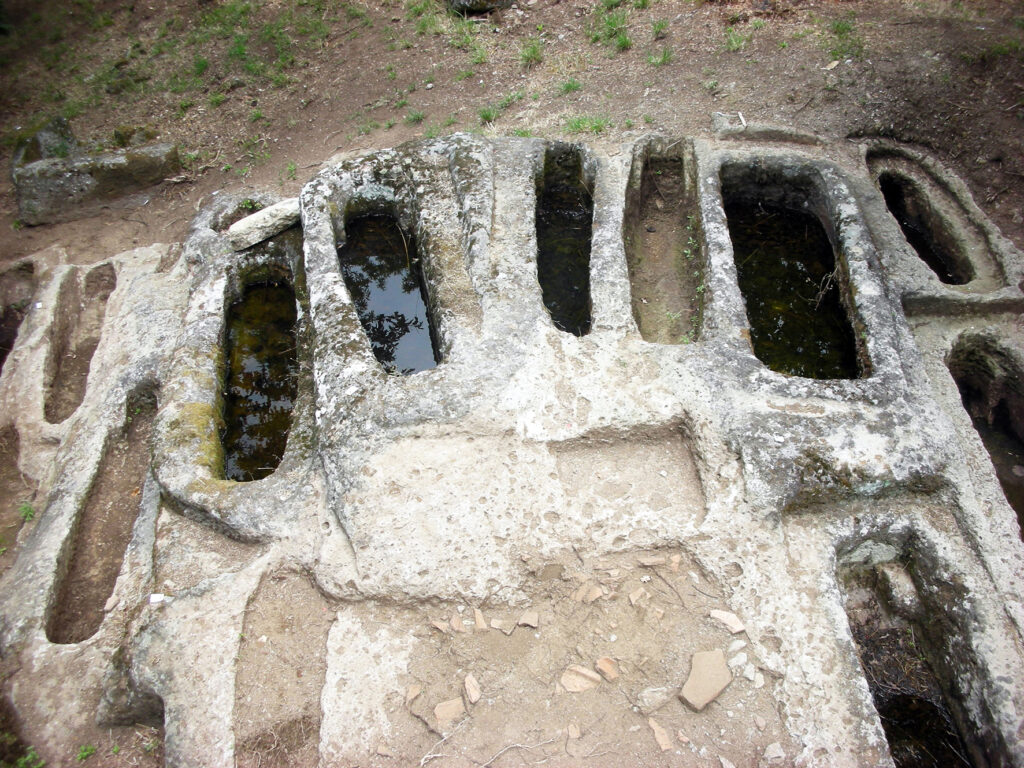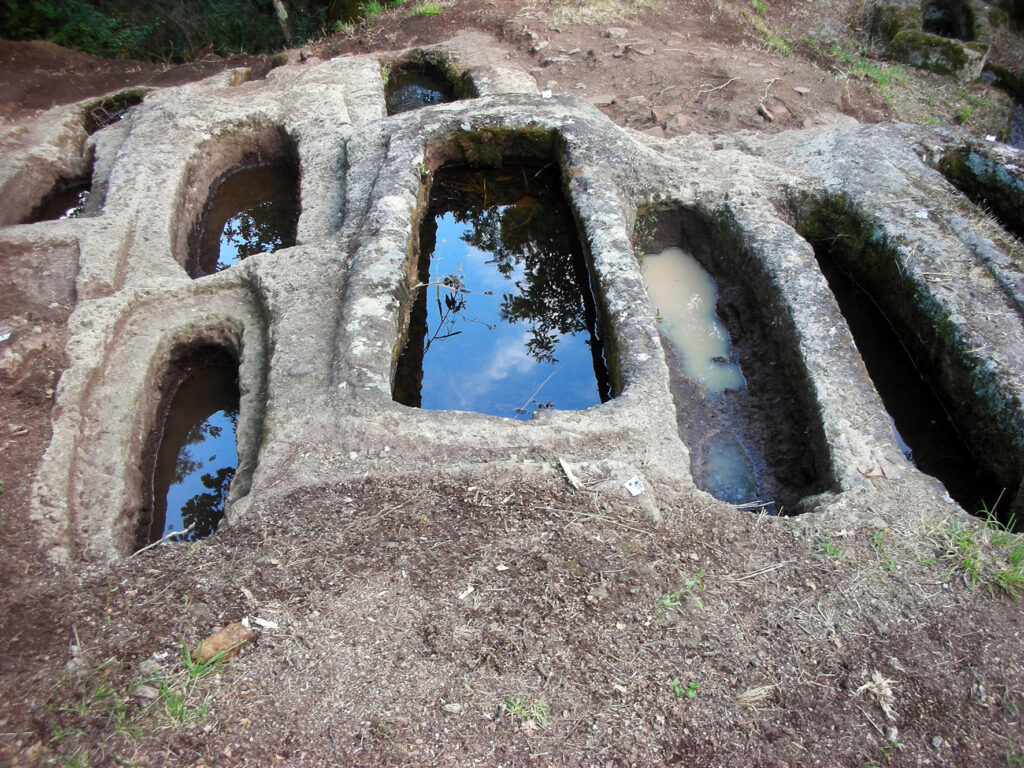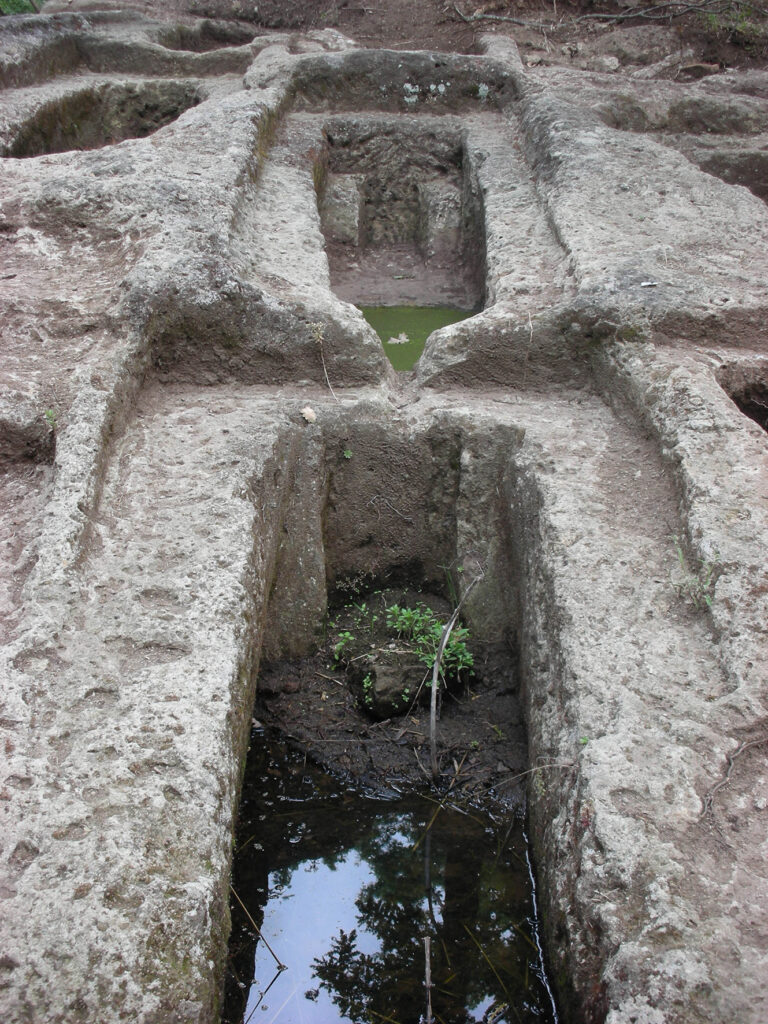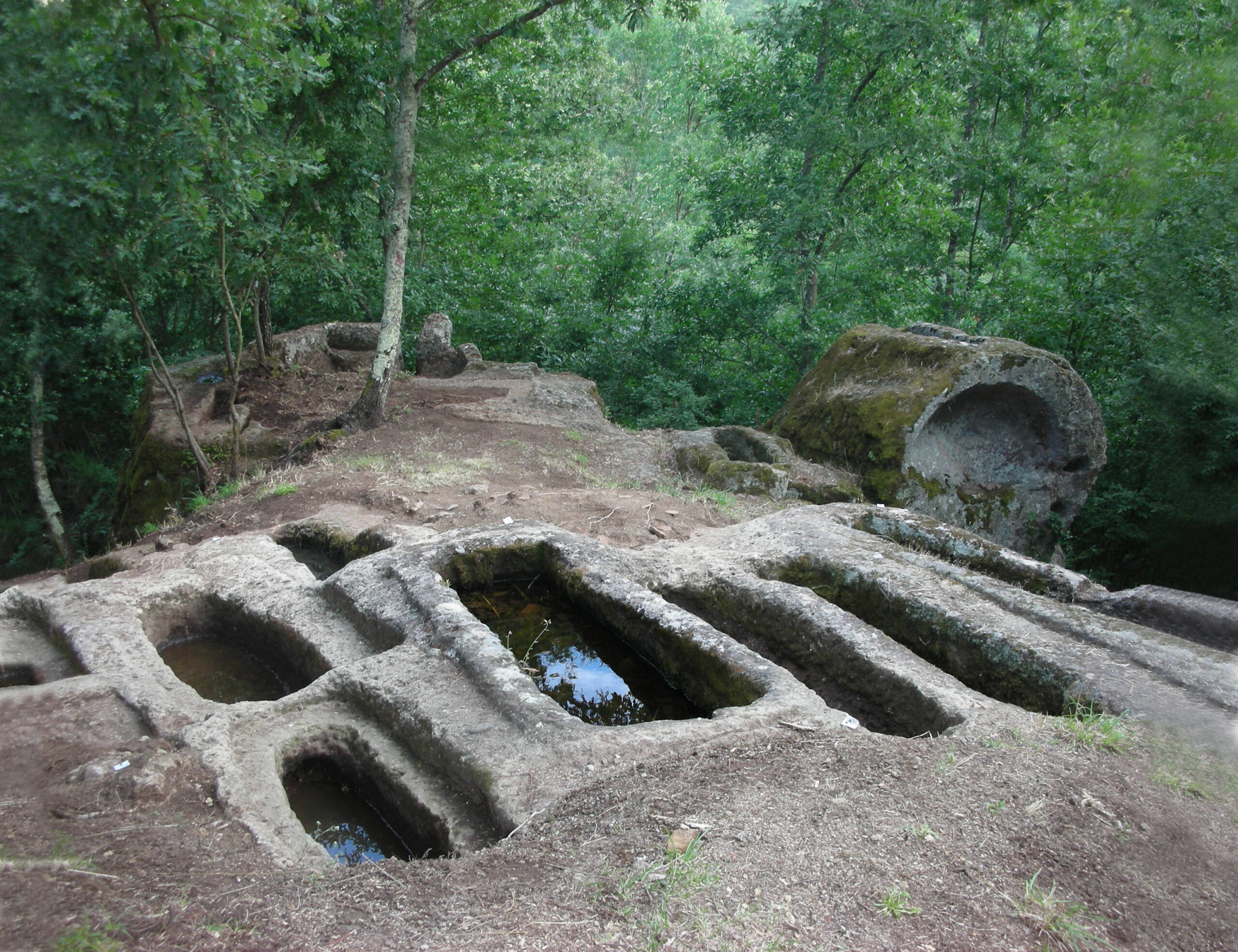Necropoli Bizantina
Bizantine Necropolis




La necropoli è costituita da sepolture di poco diffusa tipologia detta “a loggette”: gli unici altri due siti conosciuti si trovano nella non distante Corviano e a Pantelleria.
Le fosse, scavate nel peperino, con l’alloggiamento per la testa su uno dei lati brevi, erano anticamente coperte da lastre monolitiche oppure da tegole o altro materiale fittile. Il confronto con realtà similari ne fanno risalire la datazione ai secoli VI-VII, al periodo quindi della dominazione bizantina.
In ogni caso la posizione di questo territorio, situato sul limes del cosiddetto Corridoio Bizantino, stretto a nord dai Longobardi del Ducato di Spoleto, e a sud da quelli del Ducato di Benevento, ne lascia supporre un possesso piuttosto altalenate tra le due etnie come noto per un lungo periodo in feroce contrapposizione.
The necropolis consists of burials of a relatively rare type known as “a loggette” (loggia-style tombs). The only other two known sites with similar tombs are located in the nearby Corviano and on the island of Pantelleria.
The tombs, carved into peperino stone, feature a recess for the head on one of the short sides and were originally covered by monolithic slabs, tiles, or other ceramic materials. Comparisons with similar sites suggest a dating to the 6th–7th centuries, placing them in the period of Byzantine rule.
In any case, the location of this territory, situated on the limes of the so-called Byzantine Corridor—sandwiched to the north by the Lombards of the Duchy of Spoleto and to the south by those of the Duchy of Benevento—suggests that its control likely fluctuated between the two ethnic groups, who were known to be in fierce opposition for a long period.


